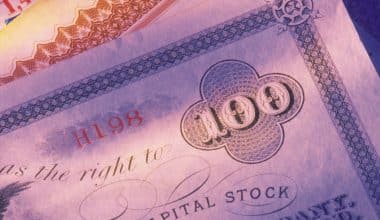Companies use a variety of accounting techniques to precisely track earnings and losses. The equity method of accounting is widely used by corporations to track the financial success of their investments in other firms or organizations. You may decide if the equity method of accounting is the best accounting system for a firm by knowing what it is and how it operates. Therefore in this post, we will learn more about what is equity in accounting and business from an owner’s perspective, and how to it works.
What Is Equity in Accounting
An organization’s investments in other companies or organizations are tracked using the accounting method known as equity accounting. It’s crucial to keep track of these investments since some corporations can acquire a portion of another company’s stock and become a partial owners. The corporation’s gains or losses from an investment with another company are also recorded using this way. All stock or investment accounts are categorized as assets by businesses. This is due to the fact that the profit of an investment company may be influenced by the earning capacity of each investment company. Companies may then choose to sell their shares in other corporations and thus utilize the proceeds to finance their ongoing operations.
Advantages of the Equity Method
The equity method of accounting has a number of advantages for tracking corporate investments, including:
#1. Improves Accounting Clarity
Keeping track of a company’s earnings and investments thus helps produce a more accurate income balance. This is due to the fact that you are keeping track of both business and investment revenue. Many businesses thus record these investment incomes as short- or long-term investments on their balance sheets.
#2. Promotes Corporate Investment
Using the equity method of accounting, a business can modify earnings to reflect profitable sales. It’s crucial for businesses whose revenue is being affected by roadblocks or market downturns.
#3. Adheres to Accepted Accounting Standards
Because it complies with widely recognized accounting rules (GAAP), firms frequently employ the equity method of accounting. The investor complies with the GAAP requirement to record income and losses during the period in which they were earned by immediately recognizing investee income.
Equity Method vs. Cost Method
Corporations utilize the equity method and cost method depending on how much of an impact they have on their investments, even though these methods assist corporations in tracking their investments in other businesses. The equity strategy is used by companies with above 20% stock or a large controlling interest.
Businesses that possess less than 20% or don’t have a controlling stake in another company use the cost technique. A consolidation method would be used if the company owned more than 50% of the shares of the target company.
How businesses record them is another variation between the equity and cost methodologies. Equities are recorded by companies as investment assets, and these valuations are subject to fluctuation. The cost technique keeps these assets’ values constant by recording their past market costs.
How Equity in Accounting Works
To know how equity in accounting works, look at this order. Shares are formal representations of a firm owner’s (public or private) ownership in the business. All shares of a class have the same rights and advantages. The term “equity” has the meaning “equal” in part because of this.
A company can thus create additional shares by offering them to investors for money. The money received from the selling of shares is used by companies to finance their operations, expand, hire more staff, and make acquisitions. Investors can purchase and sell shares from one another after they have been issued on the secondary market, which is similar to how equities typically trade on an exchange.
Types of Equity
The phrase has two primary applications, both of which are covered below:
#1. Market Equity Value (Finance)
The market value of equity, which is the current price or fair value they believe shares of the company are worth, is often of interest to financial experts. Finance experts need to know how much an investment will cost them and how much they expect to be able to sell it for in order to calculate the potential return on their investments.
#2. Book Value of Equity (Accounting)
Accountants concentrate on figuring out the book value of the stock since they are concerned with documenting and reporting a company’s financial status. Equity = Assets – Liabilities must, therefore, hold true for the balance sheet to be correct.
What Is Equity in Business
Equity, sometimes known as shareholder equity, refers to the number of shares that shareholders own or the sum of money that would be given back to them if a firm decided to pay off all of its debts and sell all of its assets. A balance sheet, which is a financial statement that details the company’s assets, liabilities, equity capital, and total debt during a specific period, is often the best way to ascertain the equity of a corporation.
Equity is frequently used by businesses to evaluate their overall financial stability and determine their ability to pay off debt effectively. The debt-to-equity (D/E) ratio, which reveals how much debt a company has taken on in comparison to the value of its assets, is also calculated by investors using equity.
When a corporation has positive equity, its assets are more than its total liabilities.
- If a company’s equity is negative, it may be at risk of financial default since its liabilities exceed its assets. A corporation enters a balance sheet insolvency when its equity is persistently negative.
- A company’s book value, which is the difference between its assets and liabilities, can also be referred to as shareholder equity. Knowing a company’s book value can help shareholders and executives make better decisions about allocating resources to increase profitability.
How to Calculate Business Equity
Before choosing to participate in a firm, shareholders can assess its financial health by knowing how to calculate corporate equity. Financial experts can examine whether it is financially feasible for businesses to expand their operations into new markets using this formula.
The following formula is used to determine corporate equity:
Equity = Total assets − Total liabilities
The measures you can use to determine business equity are as follows:
#1. Calculate All Assets
Identifying the total assets of the business is the first stage in estimating business equity. The economic resources that businesses assemble—both current and fixed assets—are known as assets. On a company’s balance sheet, current assets are assets the business anticipates turning into cash within a year. Fixed assets, on the other hand, are the things it buys for long-term usage and don’t anticipate turning into cash within a year.
#2. Determine All Liabilities.
Liabilities are a company’s debts or other outstanding obligations. Any money a corporation owes within the upcoming year is included in the liabilities portion of a balance sheet, which frequently appears below or adjacent to the assets section.
#3. Implement the Equity Formula.
You can use the equity formula to calculate the company’s business equity after figuring out the entire assets and liabilities of the business. To do this, the whole liabilities of the business must be subtracted from the total assets.
Components of Business Equity
The main elements of business equity are as follows:
The number of shares that institutional investors now own in a firm, as well as any restricted shares that it’s officials or internal workers may own, are represented by the number of outstanding shares. The sum of the shares the corporation has not yet bought back is represented by this number.
#2. Additional Paid-in Capital
The amount an investor spends over a stock’s par value is also considered business equity. In addition to the number of newly sold shares, companies compute additional paid-in capital by calculating the difference between the par value of common and preferred stock and the price at which each stock is ultimately sold.
#3. Retained Profits
The net gains that remain after dividend payments are known as retained earnings. When a corporation keeps its income rather than paying dividends to shareholders, the retained earnings account for that company will have a positive balance. Retained earnings are frequently used by businesses to fund operations or settle debt.
#4. Treasury Stock
Treasury stock, which represents the number of shares a firm repurchases from investors, is often the last thing corporations employ to calculate their equity. This stock is frequently retained by businesses in order to prevent the undervaluation of their shares and to boost financial ratios like earnings per share.
What Is Owner’s Equity in Accounting
Owner’s equity, or the percentage of a company’s value held by its sole proprietor, partners, or shareholders having a stake in the business, reflects the extent of a company’s ownership. It is frequently referred to as the business’ “net worth.” The portion of a company’s net assets that the owner, or owners, can claim as their own is known as owner’s equity. Contrary to popular belief, owners cannot take all of a company’s assets; rather, certain assets must be utilized to pay off debts owed to creditors, lenders, or other parties to whom the company owes responsibilities. As a result, owners may only possess a percentage of the company’s equity or the value of its assets.
What’s Included in Owner’s Equity?
Owner’s equity primarily consists of the following categories for privately held companies like sole proprietorships and partnerships, which either raise or diminish an owner’s overall equity:
#1. Capital Investments From the Owner (Increase).
Many business owners, especially those just starting out, finance their companies using their own cash and assets (such as equipment or vehicles).
#2. Retained Earnings Generated by the Business (Increase)
Once a company is up and operating, retained earnings help to boost equity growth and boost the company’s overall value.
#3. Money is Withdrawn by the Owner (Decrease).
Owners frequently take money out of their company. However, if they take too much, it may cause a company’s equity to turn negative.
#4. Losses Generated by the Business (Decrease).
A company may not be able to continue if its primary operations are continually losing money. Unless improvements are made or the company receives a cash infusion to turn things around, ongoing losses reduce equity.
How to Calculate Owner’s Equity
Owner’s equity is a crucial component of the traditional accounting formula Assets = Liabilities + Owner’s Equity, which determines whether the balance sheet of a business “balances.” (If it doesn’t, there could be financial statement fraud or accounting problems.) Write this equation as follows to solve for owner’s equity:
Owner’s Equity = Assets – Liabilities
How to Increase Owner’s Equity
There aren’t many ways to boost an owner’s equity in a company. The first is for the owners to increase their financial commitment to the company (in the case of a private company), add new equity partners, or permit the sale of more stock (in the event of a public company). The second strategy is to lessen a company’s liabilities, for example, by refinancing debt with a high-interest rate with one with a lower one or by cutting personnel costs. Increased profits result in larger retained earnings, the third and best approach to raising equity. This may be done through raising sales or improving operational effectiveness.
Equity Formula
A company’s total equity is calculated by deducting its liabilities from its assets. The balance sheet, one of a company’s financial statements, contains the data needed for this calculation. Cash, securities, marketable, accounts receivable, prepaid costs, inventory, fixed assets, goodwill, and other assets are the asset line items that must be combined for the computation. Accounts payable, accrued liabilities, short-term debt, unearned revenue, long-term debt, and other liabilities are the liabilities that must be combined for the computation. The calculation should take into account every asset and liability line item listed on the balance sheet.
The stockholders’ equity component of the balance sheet, which is made up of common stock, additional paid-in capital, and retained earnings, less treasury stock, can also be added together to determine total equity.
Total equity is essentially the sum of the money investors put into a firm in return for stock, plus all future profits earned by the company, less all future dividends paid. Due to their lack of resources, many smaller companies have never paid dividends. Total equity in their case is simply invested money plus all future profits.
Example of Total Equity
ABC International’s balance sheet shows total assets of $750,000 and total liabilities of $450,000. Its entire equity is determined by:
$750,000 Assets – $450,000 Liabilities = $300,000 Total equity
How to Use Total Equity
Lenders might use the calculated total equity to determine whether there is enough money invested in a company to pay off its loan. Investors can use it to determine whether there is enough stockpiled equity to demand a dividend. Finally, it can be used by suppliers to determine if a company has built up enough equity to merit being given credit.
Is Equity an Asset or Income?
Both equity and assets add value to a company and support its operations and financial success. Assets are the value a firm already has, whereas equity is money invested in exchange for stock in the company.
Is Equity an Asset or an Expense?
Expensive items are not assets, liabilities, or equity.
Is Equity the Same as Money?
The sum of money the owner of an item would receive if they sold it and all associated debts were settled is known as equity.
How to Calculate Equity?
Entire assets minus entire liabilities equal equity.
Related Posts
- WHAT ARE ASSETS AND LIABILITIES: Definition, Differences and Examples
- Owner’s Equity Statement: Definition, Analysis, Formula & How to Calculate It
- BRAND EQUITY: How To Build a Brand Equity (With Examples)
- WHAT IS AN EQUITY: Meaning, & All You Should Know






